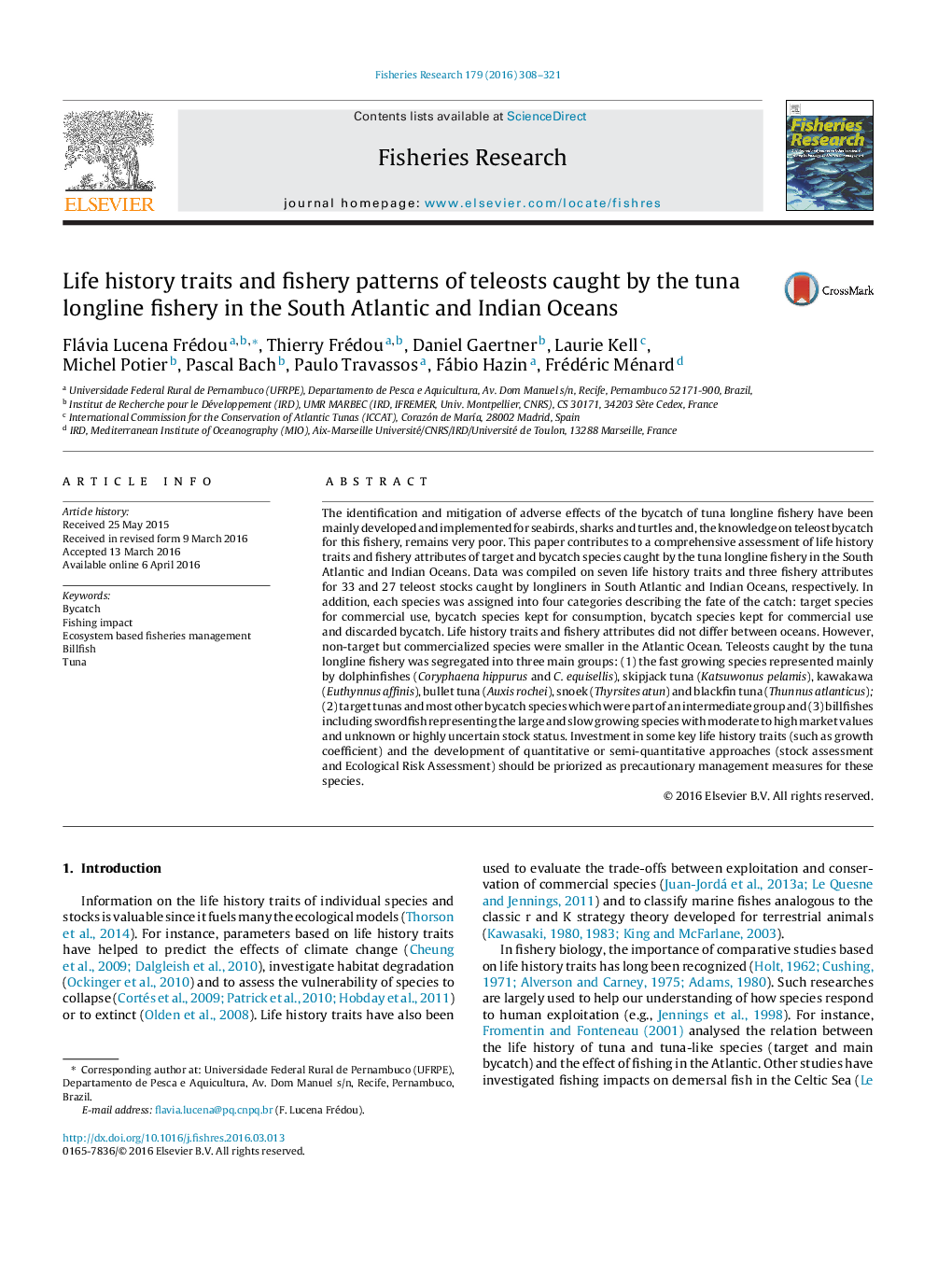| کد مقاله | کد نشریه | سال انتشار | مقاله انگلیسی | نسخه تمام متن |
|---|---|---|---|---|
| 6385380 | 1626790 | 2016 | 14 صفحه PDF | دانلود رایگان |
The identification and mitigation of adverse effects of the bycatch of tuna longline fishery have been mainly developed and implemented for seabirds, sharks and turtles and, the knowledge on teleost bycatch for this fishery, remains very poor. This paper contributes to a comprehensive assessment of life history traits and fishery attributes of target and bycatch species caught by the tuna longline fishery in the South Atlantic and Indian Oceans. Data was compiled on seven life history traits and three fishery attributes for 33 and 27 teleost stocks caught by longliners in South Atlantic and Indian Oceans, respectively. In addition, each species was assigned into four categories describing the fate of the catch: target species for commercial use, bycatch species kept for consumption, bycatch species kept for commercial use and discarded bycatch. Life history traits and fishery attributes did not differ between oceans. However, non-target but commercialized species were smaller in the Atlantic Ocean. Teleosts caught by the tuna longline fishery was segregated into three main groups: (1) the fast growing species represented mainly by dolphinfishes (Coryphaena hippurus and C. equisellis), skipjack tuna (Katsuwonus pelamis), kawakawa (Euthynnus affinis), bullet tuna (Auxis rochei), snoek (Thyrsites atun) and blackfin tuna (Thunnus atlanticus); (2) target tunas and most other bycatch species which were part of an intermediate group and (3) billfishes including swordfish representing the large and slow growing species with moderate to high market values and unknown or highly uncertain stock status. Investment in some key life history traits (such as growth coefficient) and the development of quantitative or semi-quantitative approaches (stock assessment and Ecological Risk Assessment) should be priorized as precautionary management measures for these species.
Journal: Fisheries Research - Volume 179, July 2016, Pages 308-321
